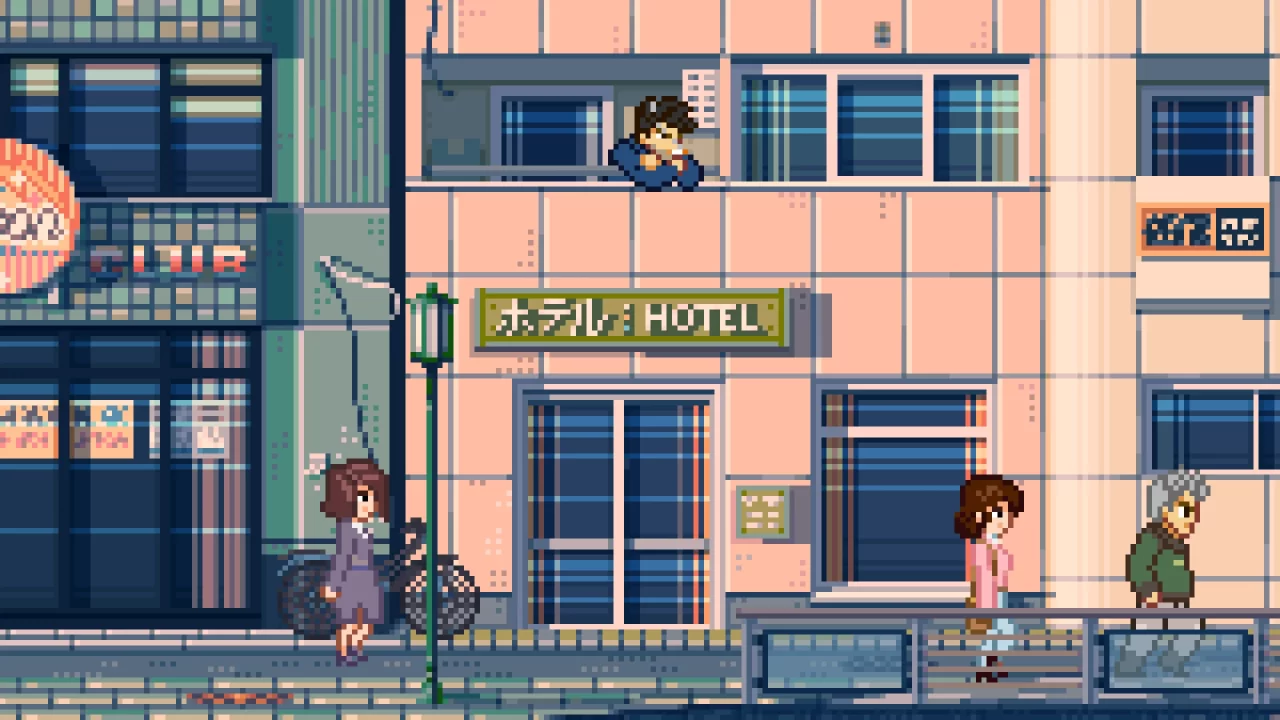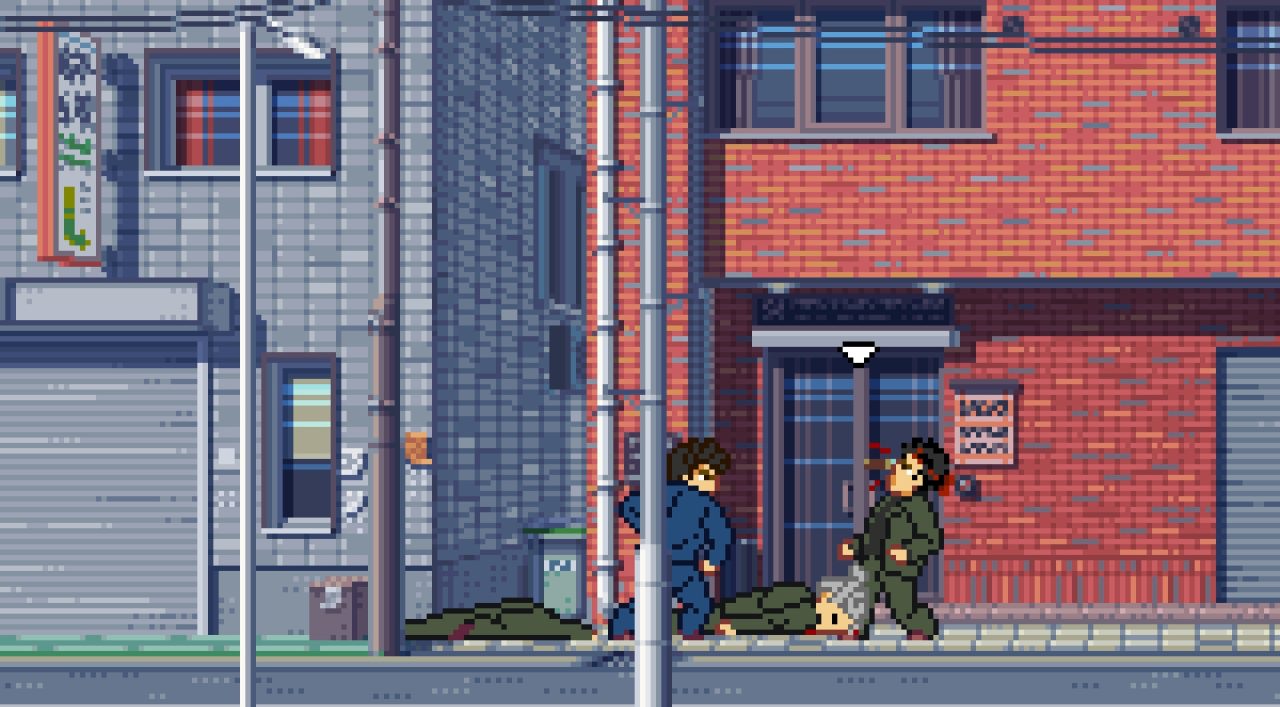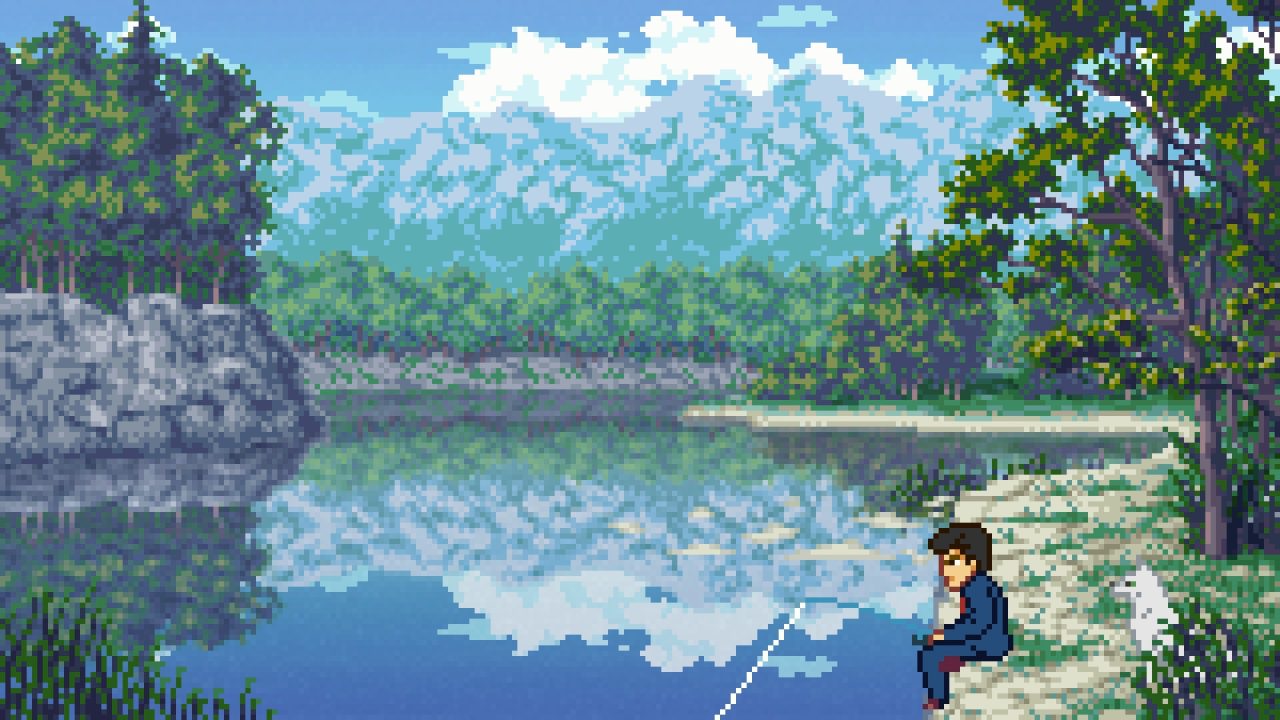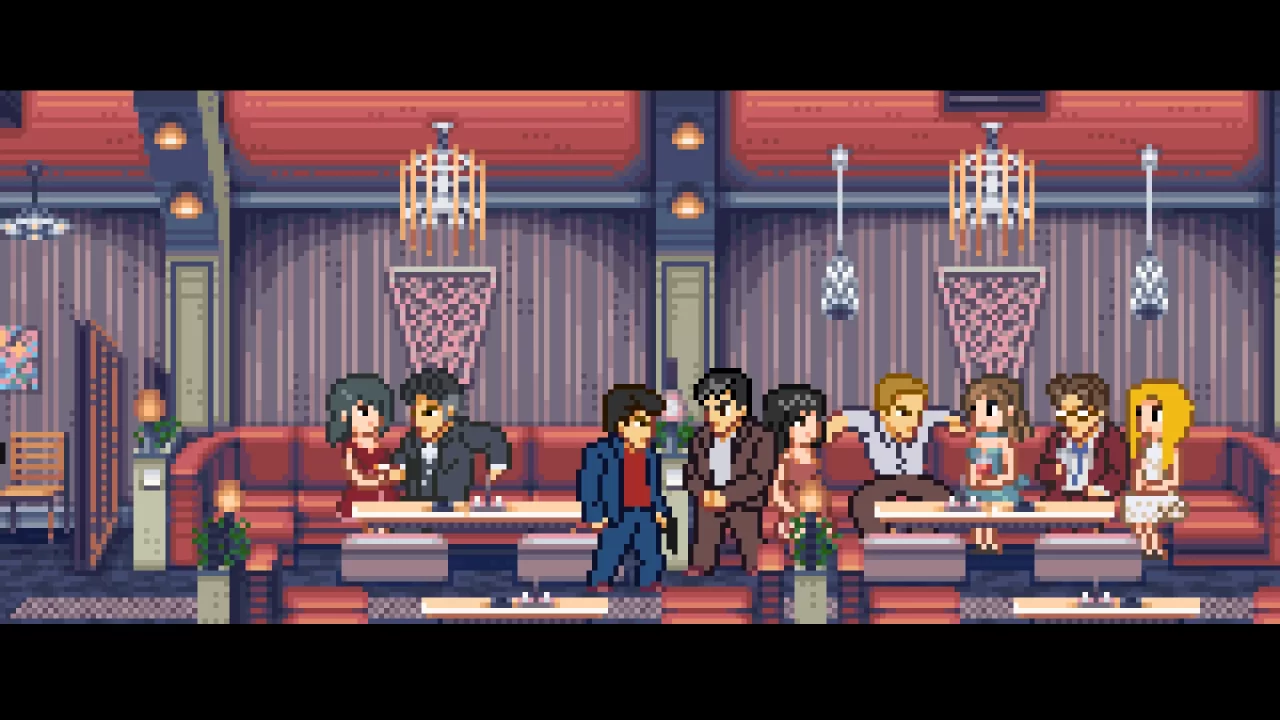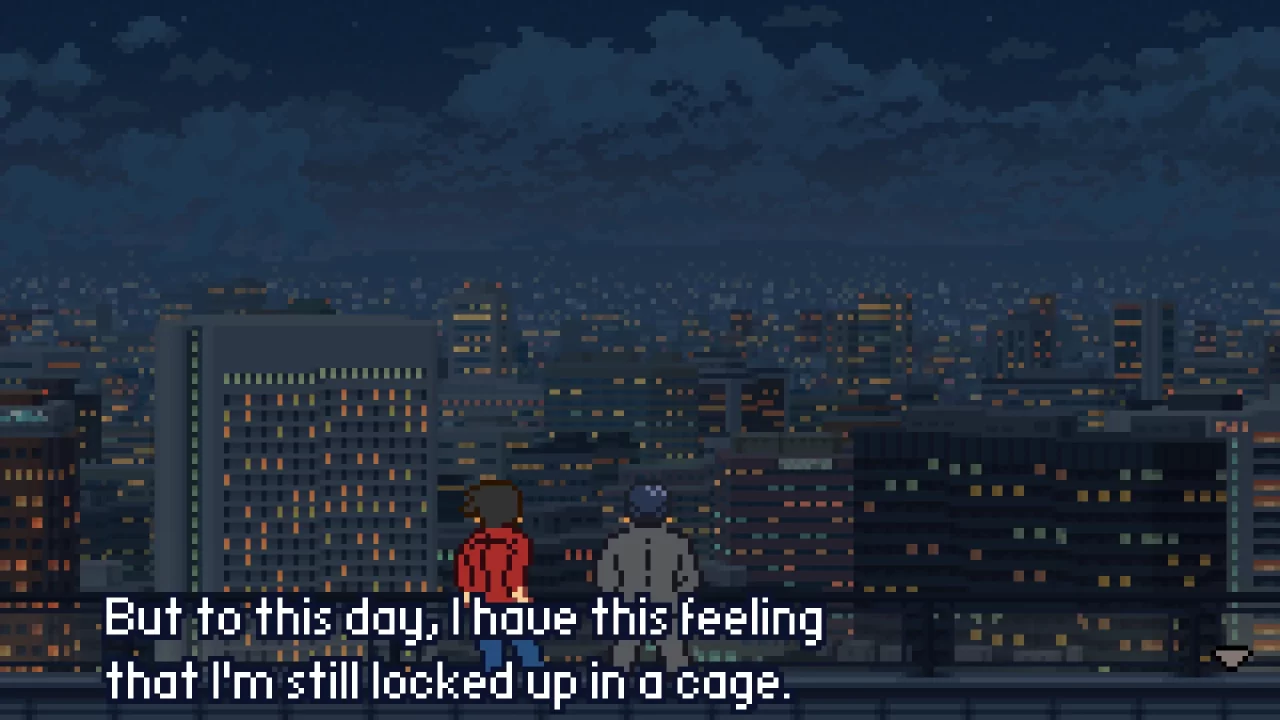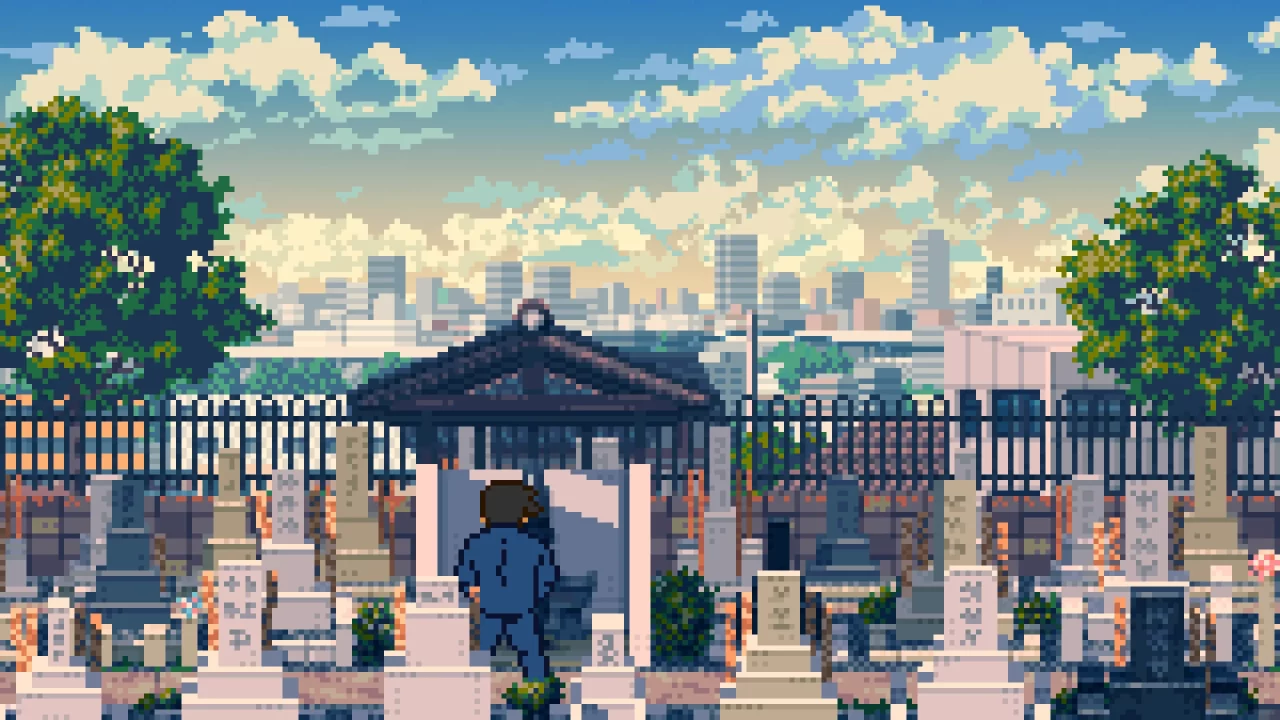Fading Afternoon is the third game from Yeo, a solo Russian developer whose work so far revolves around simulating the lives of Japanese criminals. Yeo’s debut title, The Friends of Ringo Ishikawa, is about a high school gang leader. The follow-up, Arrest of a Stone Buddha, puts players in the role of a hitman. Fading Afternoon’s protagonist, Seiji Maruyama, is a respected yakuza who has finished serving a prison sentence at the start of the game. He is picked up by his old colleague, Azuma, the leader of a dwindling yakuza family who offers Maruyama a position back in the crime grind.
Yeo’s representation of his protagonists’ lives is not cartoonified, glamorized, or a simple conduit for exciting gameplay. His games always purposefully contrast the action-packed thrills the protagonists expose themselves to with the mundanity of what comes between. Think Persona and Yakuza/Like a Dragon but free of silliness or gamification. The results have been three artistically minded videogames that ask players to embody and reflect on the stone-cold masculinity of the protagonists and the meaningful/less violence they commit during play.
The way Yeo’s games are paced and structured helps express the protagonists’ existential dilemmas. Very little is said outright, but there’s deep feeling if the player immerses themselves in the lives of these characters. Yeo is trying to make use of the poetics of the videogame form rather than draw on storytelling methods from books or movies. The Friends of Ringo Ishikawa and Arrest of a Stone Buddha came packaged together as the Existential Dilogy. Fading Afternoon’s similar aesthetics, thematic interests, and consolidation of ideas from its predecessors make it feel like a capstone to a trilogy.
There are admittedly some trade-offs that come with Yeo’s particular game and narrative design vision. Basic tutorializing and user-friendly signposting are intentionally absent here, creating a sense of confusion and aimlessness that makes his games difficult to parse at first. The design of Yeo’s titles appeals more to vibing roleplayers than task-oriented gamers. If indulging in mundane actions like lighting a cigarette and leaning over your hotel balcony, taking your girlfriend out for dinner, or tossing off your sports jacket and rolling up your sleeves before getting into a brawl doesn’t sound like appealing gameplay to you, Fading Afternoon might not sink its teeth in you the way it did me.
Fading Afternoon’s idiosyncrasies are what makes it so compelling, but there’s still a concrete gameplay loop to ground it all. The game fuses life simulation with beat ’em up combat in a way that encourages you to get in the protagonist’s mindset. Fighting is visually and mechanically reminiscent of classic brawler franchises like Streets of Rage and River City Ransom, but with some subtle added depth and stylistic flair. You have a fixed moveset with combos, throws, and defensive maneuvers to master as you adapt to the different enemy types surrounding you. It doesn’t reinvent the wheel, but it feels satisfying and fair and works for the game’s purposes. Pulling off moves like dodging a bottle thrown at you or disarming a goon’s knife and stabbing the guy sneaking up on you feel good enough to prevent these relatively short encounters from ever dragging.
There’s a crucial catch behind the game’s larger life sim structure. Soon after beginning the game, you see Maruyama cough up some blood in the middle of the night as his maximum health deteriorates. Turns out our yakuza has a terminal illness and isn’t long for this world. Maruyama’s dwindling max health is your timer for ‘finishing’ the game.
So, use your time wisely—whatever that means to you. The game certainly won’t say. Each in-game day is a week in this world (something a new player should keep in mind). Each day allows you to travel to three locations on the map. These locations usually include one or two establishments. A bar to drink at. A bathhouse to heal your wounds. A hostess club. A pier for fishing. And many more with varying levels of interactivity. All you know you should do is beat up thugs from rival gangs to take over territories for Azuma. The rest is up to you and what you want for Maruyama in his final months.
This is a review of Fading Afternoon, but I also want it to serve as the sort of primer I wish I had for learning the game. When it comes to the basic large-scale game systems, a bit more guidance would go a long way to make the game’s experience less hostile to new players. For a game that places such a central emphasis on roleplaying, better situating the player in their role would help avoid some confused tedium and help them naturally experience what makes this game so special. So, here’s some spoiler-free information that can serve as a light on-ramp before getting started:
- As a senior yakuza, Maruyama is in charge of controlling territories for his boss, Azuma. Your family’s only territory (coded in black) at the start is the Bar location, but you can compete for locations overseen by rival bosses Harada (green) and Tanaka (brown) by initiating fights (confirm + cancel buttons) with the goons you see hanging around them.
- A red ring around a territory on the travel map signals an ongoing gang war, which can occur either in territories you already own or are competing for. If you don’t win the war by the end of the day, you will lose one level of influence (represented as 1-5 stars) in that territory.
- If you’ve beaten the influence out of a rival gang’s territory, you receive an assassination target (“shatei”) shown in vague pictures that you must figure out the exact location of. Finding and assassinating the target is necessary to consolidate your takeover of the territory.
- Taking over rival territories is how you progress the “main story.” It’s also how you can most easily make money. With that said, there are many ways the game can progress based on choices you make during and adjacent to the main questline.
- Pay attention to what characters say. Dialogue in the game is minimal, but it tells you quest objectives (which are often time-sensitive), and there’s nothing in menus or the interface that flags this for you or keeps track of what you’ve done or should do.
The rest of the game’s mechanics and secrets are worth discovering for yourself. This process will involve trial and error that comes with both frustrations and a satisfying sense of improvisational discovery. I hope the above information serves as a baseline to help players avoid wasting a playthrough having no idea what is going on. Maruyama is a veteran yakuza. He should know what’s expected of him, as should the player put in his shoes. From here, though, you can discover a variety of other activities and routes throughout your playthrough.
Fading Afternoon brims with subtle interactions and hidden narrative paths. I played through the game three times for this review. I unknowingly fumbled my way through the first, and Maruyama met an early end since I didn’t take some advice from his boss as seriously as I should have. This was an exciting revelation that showed me that the game was paying attention to how I played and responded to situations. I got much further in the game’s timeline the next two runs, but both were notably distinct experiences based on the interactions I pursued and choices I made in the main story. These playthroughs each ranged from about 3-6 hours. There’s no manual save option, so once you reach a conclusion you will have to start the game over to keep playing. There are plenty of variations and endings to discover in Fading Afternoon and seeing them all takes a knowledge of the game developed across multiple runs.
This deliberate obtuseness has both positive and negative effects on gameplay. At its best, it can lead to the discovery of little interactions that feel like a magic trick because you intuited it yourself from a desire to roleplay. These interactions include things like realizing that you can slap a disrespectful underling so they bow properly to you. Or, when I was on a date with a girl, I took her to my hotel balcony and—at a loss for how to interact further—tried that same input I used to strike male characters and it led to an embrace and kiss. The pleasure of discovering these little mechanics is sorely lacking in the over-tutorialization of modern videogames.
Another of Fading Afternoon’s pleasures is its audiovisual presentation. Yeo’s games feature pixel art handled by a small team that even includes his own father. The art style has maintained the same look across each title, and there’s some eye-catching art direction in the passage of days and seasons. Not all the character designs pop, but it fits the game’s grounded tone and the general look and use of little animated gestures provide plenty of personality. The music is a broad collection of instrumentals by various artists that supports the vibey and contemplative atmosphere. There are a lot of jazz, soul, and funk-inspired tunes perfectly suited to strutting through urban streets while smoking a cigarette.
As much as I love what Fading Afternoon is doing, some bugs hampered my experience. I didn’t encounter anything playthrough breaking, but I got soft-locked several times, which required a quick reload. Since the game released on September 14, Yeo has been putting out regular patches implementing bug fixes and new features. The game is certainly playable in its current state, and I wouldn’t recommend it any less if the rest sounds interesting to you, but it’s something a potential buyer should be aware of.
Aside from bugs, Fading Afternoon’s other primary issue is some janky control interactions. When I finally saved up enough yen to buy Maruyama a two-storey house, it took me a few minutes just to figure out how to get down from the second floor on my first morning there. Turns out it required me to press down near the finically positioned staircase—a button function not used at any other point of the game. Other than the d-pad, actions are assigned across only three buttons and the associated button press combinations. For example, taking out your gun requires you to press the action button while holding the item button. I can see how this works in tandem with how the game wants players to discover things for themselves through experimentation, but in practice I consistently fumbled on actions I forgot how to perform. Fortunately, the combat controls are well explained in a tutorial and the game’s menu.
Despite these minor quibbles, Fading Afternoon is a passion project made by a solo developer. I’m more inclined to forgive Yeo for some of the bugginess and control issues than I would a AAA product and trust that more of these frustrations will continue to be ironed out in small patches. The same probably can’t be said for the obtuse design, but that’s a creative choice that will appeal to some and not to others.
If anything about what I described here sounds intriguing and you’re not inherently opposed to a little jank, I implore you to check Fading Afternoon out. Despite some clear inspirations, there’s really nothing else out there like the games Yeo has put out—and this might be his most intricate and compelling work yet.

